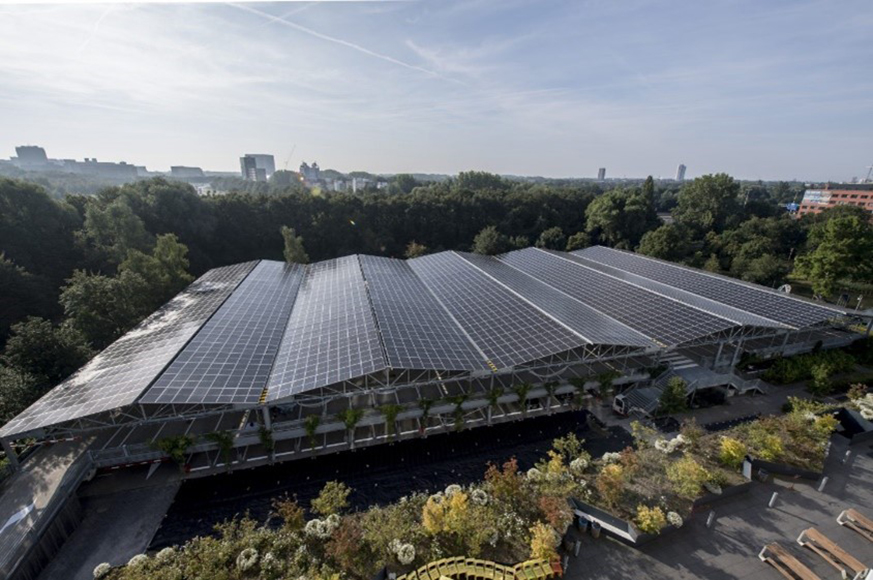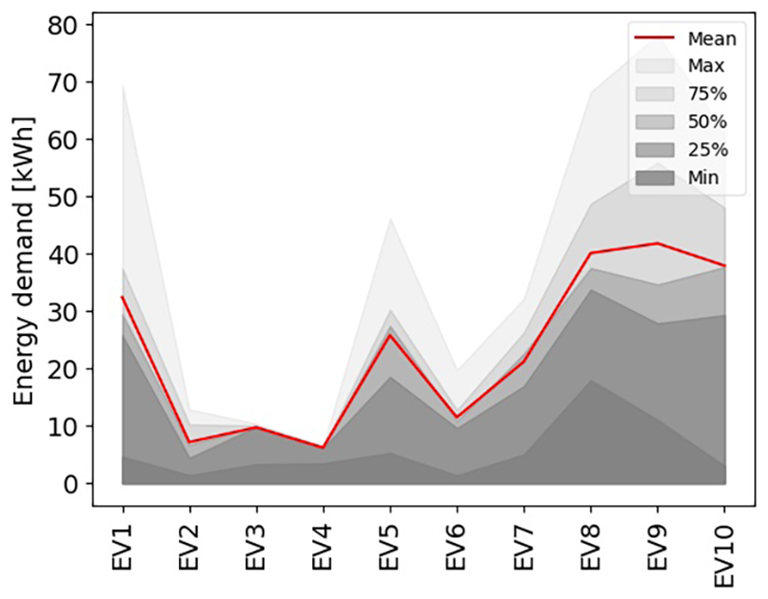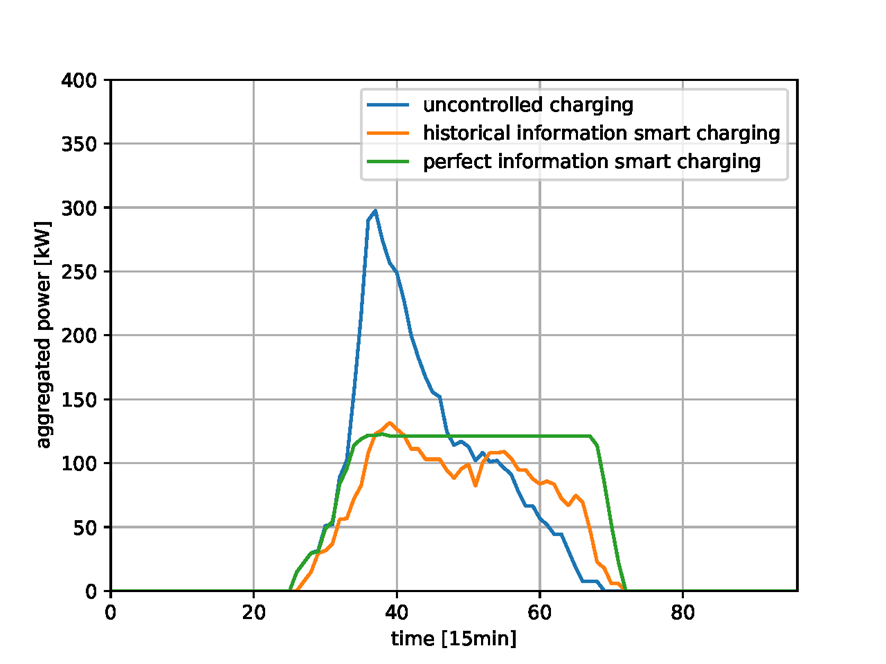

Office parking lots – potential smart charging hotspots
By Leoni Winschermann and Nataly Bañol Arias
An office location is an ideal place to build electric vehicle (EV) charging infrastructure and we will illustrate why, using the a.s.r. parking deck as an example.
First, what is smart charging and why do we need it? Locations like a.s.r. can only provide a certain amount of power due to limitations in the electrical grid or due to economic reasons. Think about a water tap and the amount of water that can flow through it. The more water you want, the longer you have to wait for it. Also, if all of your neighbors open their water taps when you have the water running, the water pressure will go down and you have to wait a little longer still to get the water you want. Similarly, if too many electric cars are plugged into the grid at the same time and charge at full power, the power available at the grid connection, or tap, has to be shared among all cars. If we still want all cars to get their energy, given the amount of power our grid connection can provide, we need what we call “smart charging”. Smart charging can help to avoid grid overload, but also to help reduce charging costs for the EV users or even help reduce CO2 emissions when charging the EVs with renewable energy. That makes it both an economically feasible and environmentally friendly option!
For smart charging, it is important that EVs are flexible in when we charge them. If they stay twice as long as they would need for charging, we can for example charge them in the second half of their stay, or charge them at half their maximum power. In both cases, the battery is fully charged in the end, we only select the best time to charge the EV. However, to smartly charge your EV, we need information on when and how long a car is plugged in, as well as how much energy it needs to charge.
In practice, we don’t usually have that information available, which makes smart charging more challenging. However, in some places, we can derive a lot from behavior we have observed there in the past. The following three properties make office locations ideal for smart charging.
1. Homogeneous population
One of the main characteristics of cars parking in an office parking lot like the one at a.s.r. is that they likely belong to employees that come there regularly. In the Netherlands, we often talk about having a nine-to-five culture. For a.s.r., we had a look at the anonymous electric vehicle charging data of the past year. Even though it is not exactly nine-to-five, most cars arrive between 7 and 10 o’clock in the morning, and they leave around 15 to 18 o’clock.

Better still, since employees tend to come to work multiple times per week, we can even see patterns for each individual electric vehicle driver. Most importantly, we can analyze how much energy they usually charge their cars with. Based on that, we can make estimations of the arrival time, departure time, or even the energy requirement for the next day. See Figure 2, for example: If we know they are coming, we can estimate how much energy each car will require. And remember that is crucial information for smart charging!

2. Day-time parking
The great advantage of an office location is that cars are usually parked for a long time. In the case of a.s.r., we saw that last year an electric vehicle would on average stay parked for 6.5 hours. Charging at full power, most batteries are full again after just two or three hours, so there is some room to do smart charging and slow down charging, or shift it forward in time.
Plus, cars are connected to the chargers during day-time. That is exactly when the extensive solar PV installation at a.s.r. generates green energy. That green energy can then be used to charge the EVs while contributing to reducing CO2 emissions and reduce the load on the grid. So instead of charging at full power early in the morning, cars charge more around noon, when the sun is shining.

3. Potential of smart control
Lastly, smart charging in an office location is great because of its great potential to improve the operation of the local electrical grid. We simulated what we could achieve at the a.s.r. parking lot if we introduced smart charging and found that power peaks can be reduced by 59% if we had all information on how long cars stay and how much energy they require beforehand (perfect information smart charging). In practice, we don’t. But already using knowledge on user’s past behavior (their average arrival time, dwell time and energy requirement), we can reduce power peaks by about half.

As we have seen, office locations are great locations for smart charging of electric vehicles, at least partially because of the characteristics of those parking there, as well as the time-of-day and duration of the stay, and the potential in power peak reduction that can be achieved in a single location. Follow the SmoothEMS met GridShield project for more results and on-going research on the topic.







